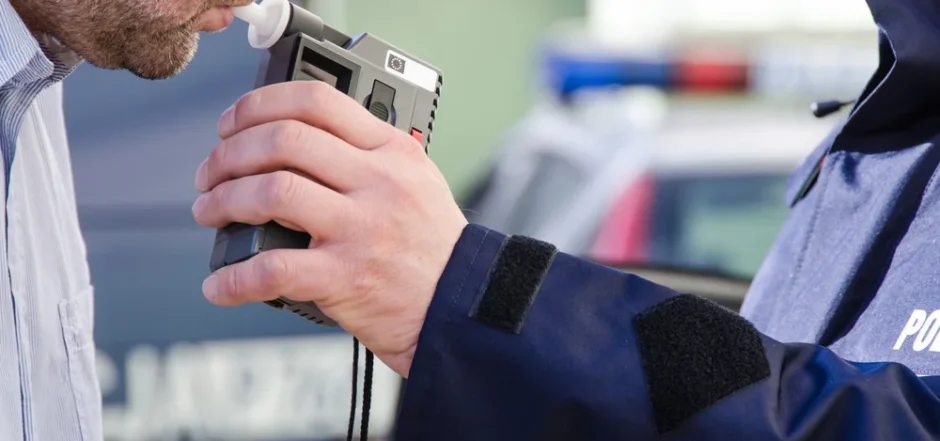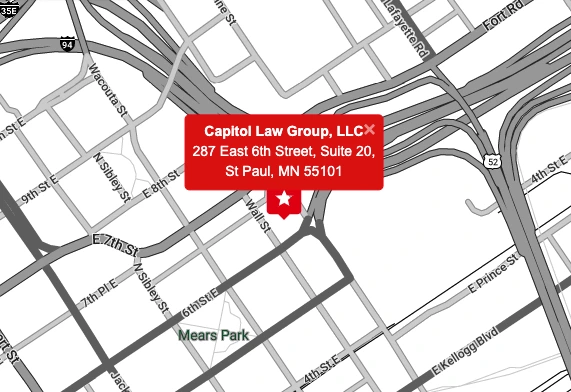DWI Field Sobriety Tests and St. Paul DWI Attorneys

Most Ramsey County DWIs involve chemical tests. Defendants who blew into Breathalyzers are not automatically guilty. These tests are not 100 percent accurate, especially at .08, .09, and other borderline BAC levels. There may be some procedural defenses as well. However, the conviction rate in Breathal=yzer and blood test cases is very high.
The conviction rate is much lower if defendants refuse chemical tests and prosecutors must rely on circumstantial evidence from the Field Sobriety Tests (FSTs). Especially with regard to certain tests, a St. Paul DWI attorney may be able to significantly undermine test credibility. And, since an attorney need only create a reasonable doubt as to guilt, this undermining greatly increases the chances of a positive result.
Unapproved Tests
Not all FSTs are created equally. Some are more reliable than others. Perhaps more importantly, some have relatively broad acceptance in the legal community, and some do not. Some of these unapproved tests include Romberg’s balance test (the head back, arms extended, and eyes closed test), the finger-to-nose test, and the reciting-the-ABCs test. Depending on the circumstances, St. Paul DWI attorneys have some options with regard to these tests.
Since they are completely unscientific, many Ramsey County judges either do not allow prosecutors to admit the results or only allow the jury to consider the results for limited purposes.
In other situations, it may be better to air these test results in the open. Some of them, like the Romberg test, are so complex that officers probably do not even understand the test. Others, like the ABCs test, are almost laughably unscientific. If jurors learn that officers used biased or unscientific tests, they may discount the officer’s testimony in other areas as well.
St. Paul DWI Attorneys and Approved Tests
The National Highway Traffic Safety Administration has approved three FSTs for use in American courts. However, even though these tests have NHTSA’s seal of approval, that does not mean they are valid. A St. Paul DWI attorney can still successfully challenge them, in many cases.
Horizontal Gaze Nystagmus (HGN)
Not long ago, many people considered the DWI eye test to be the most reliable FST. Now, much like the unapproved tests, many judges only allow prosecutors to introduce the results for limited purposes.
Alcohol use causes nystagmus. This condition, which is also called lazy eye, causes involuntary pupil movements at certain viewing angles. In addition to alcohol, lots of other things, such as a genetic abnormality and a childhood brain injury, may cause nystagmus. Additionally, many people who have a lazy eye do not know it. The symptoms are very mild and they only appear during times of extreme stress. A DWI arrest certainly qualifies as such.
These concerns are especially acute with regard to roadside HGN tests. For example, flashing squad car lights are not just for decoration. These lights are designed to cause flicker vertigo and disorient defendants. Other eye test conditions are less than ideal. The sky is usually dark and vehicles often whiz by at high speeds. Some of these vehicles may have LED headlights which are visible from orbiting satellites. Okay, we made that last part up, but you get the point.
Because of all this, some judges allow prosecutors to use HGN results as evidence of probable cause, but not for evidence of guilt or innocence.
One Leg Stand (OLS)
Thes test order is significant. Many officers start with the unapproved tests. So, even if a judge throws them out later, defendants are mentally and physically fatigued when the tests that count roll around. NHTSA recommends that officers administer the HGN test first, probably because voluntary HGN compliance is high.
The OLS is the first of two divided attention tests. Theoretically, intoxicated people cannot physically and mentally multitask. In other words, they cannot walk and chew gum at the same time.
In this test, defendants must elevate one leg for a certain number of seconds without losing their balance. Officers look for intoxication clues, such as elevating the wrong leg or using arms for balance.
This test is very difficult to complete, whether the defendant is drunk or sober. In court, the state must prove that defendants failed the FSTs because they were intoxicated, and not because they were nervous, tired, injured, or clumsy.
Walk and Turn (WAT)
This test is the second divided attention test. Defendants must walk a straight line heel to toe without losing their balance. Once again, officers look for clues, like taking the wrong number of steps, starting with the wrong foot, or using arms for balance.
Much like the HGN test, conditions often affect results. It is much easier to walk heel to toe along an actual line, like a parking lot stripe, than an imaginary line. Additionally, even slight elevation or grade changes can affect the WAT test.
Connect with Hard-Hitting Lawyers
The DWI FSTs are far from 100 percent reliable or accurate. For a free consultation with an experienced St. Paul DWI attorney, contact Capitol City Law Group, LLC. Go online now, call us at 651-705-8580, or stop by 287 6th St E, Suite 20, St Paul, MN 55101.




